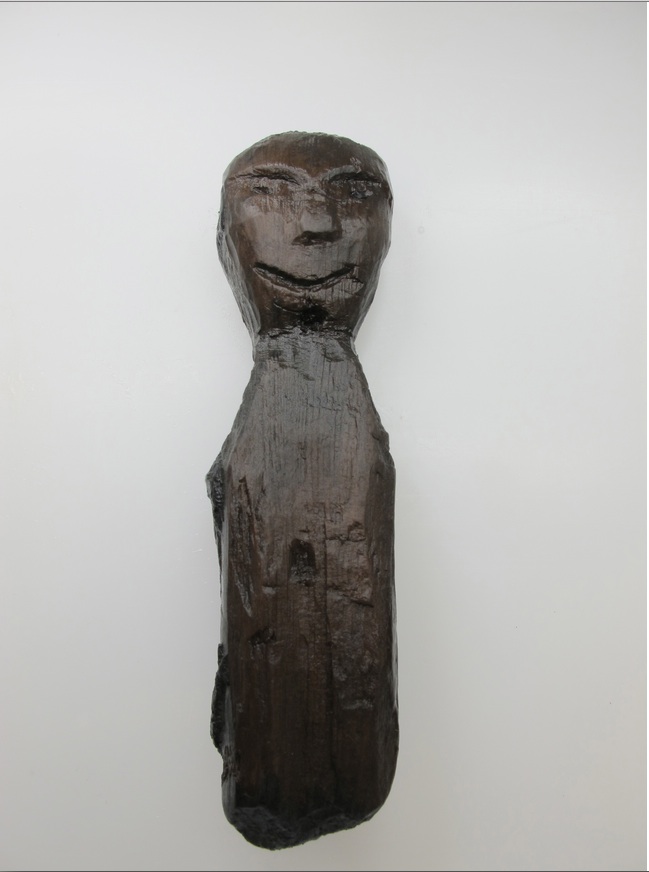
Every indigenous group European explorers found when they first reached the Americas, from the Aztecs to the Inca to the Maya to the obscure Taino people were descended from a hardy bunch of immigrants who trekked over from Siberia more than 12,000 years ago, then spread east and south from there.
But when the Vikings began visiting Greenland and Baffin Island they bumped up against an indigenous group with a very different heritage—the Arctic dwelling people formerly known as Eskimos and now mostly called the Inuit. Based on archaeological evidence, scientists had established that they first came over from Siberia about 6,000 years ago and spread eastward across the very northernmost reaches of Canada, on the margins of the Arctic Ocean.
Then about 700 years ago, these so-called Paleo-Eskimos, gave way to a newer group known as the Thule culture. They displaced the earlier arrivals, just as our own invading ancestors had displaced the Neanderthals in Europe some 40,000 years earlier. What wasn’t clear, however, was whether the Paleo-Eskimos (or the Dorset, the name given to the last stage of Paleo-Eskimo cultural evolution) were simply absorbed into this new, more modern culture or whether, they vanished from the Earth, as the Neanderthals did.
But now it is, thanks to new paper in Science. Based on genetic analysis of 169 ancient human remains from Siberia, Alaska, Canada and Greenland, along with genome analyses of modern indigenous people, the authors can say definitively that the Paleo-Eskimos did indeed vanish; that the Inuit people who live in the North American Arctic today are the direct descendants of the Thule invaders; and that neither group is related to the Native American tribes that came to inhabit the rest of the Americas.
Exactly how the Dorset people were overwhelmed is unclear. Unlike the Neanderthals, they evidently didn’t mate with the invaders. “In other places,” said co-author Eske Willerslev of the Center for GeoGenetics at the University of Copenhagen’s National Museum of Natural History, at a press briefing, “we see people meeting, maybe fighting, but also having sex with each other.”
But the Paleo-Eskimos were genetically distinct. “There is some genetic admixture with the Thule,” said lead author Maanasa Raghavan, also at the Center for GeoGenetics “but it happened thousands of years earlier, most likely in the Old World.”
Instead, argued co-author William Fitzhugh, of the Smithsonian’s National Museum of Natural History, in Washington, “they were probably just overwhelmed.” The Thule, he explained, had bows and arrows, dogsleds and large whaling crews he calls “almost military” in their organization. The Dorset, by contrast, had much simpler tools, and lived in small, isolated villages.
“Socially and technologically,” he said, “they were no match for this Thule machine that spread across their territory in less than 100 years.” They were either pushed out into fringes where couldn’t survive, or they were annihilated, he said.
Until that happened, however, the Paleo-Eskimos were an astonishing success story, given that they endured in the harshest of climates, without major disruption for a staggering 5,000 years. It’s extraordinary, said Fitzhugh, that they maintained genomic and cultural continuity over such a long period, while other world cultures were going through radical changes.
“One might almost say,” said Fitzhugh,”that they were the Hobbits of the eastern Arctic—a strange, isolated, conservative people whose history we’re just starting to get to know.”
More Must-Reads from TIME
- Donald Trump Is TIME's 2024 Person of the Year
- Why We Chose Trump as Person of the Year
- Is Intermittent Fasting Good or Bad for You?
- The 100 Must-Read Books of 2024
- The 20 Best Christmas TV Episodes
- Column: If Optimism Feels Ridiculous Now, Try Hope
- The Future of Climate Action Is Trade Policy
- Merle Bombardieri Is Helping People Make the Baby Decision
Contact us at letters@time.com